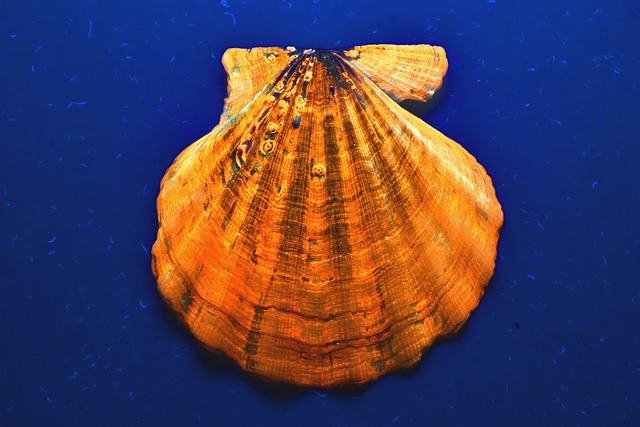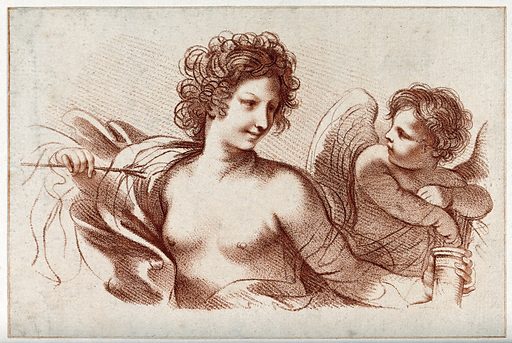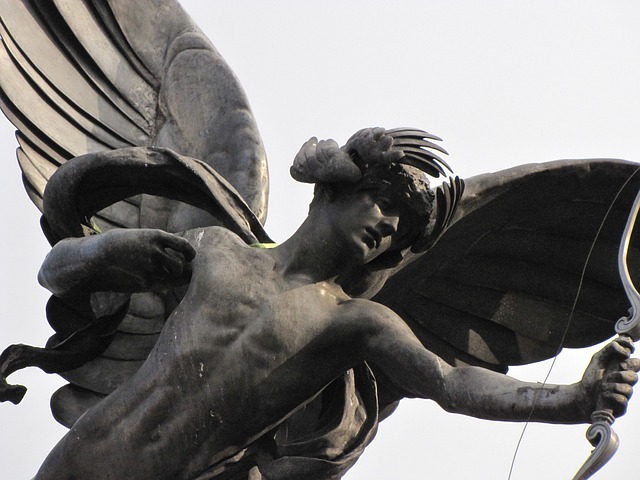
The Exciting Allure of Aphrodite: Goddess of Love and Beauty
The Exciting Allure of Aphrodite
Aphrodite, the radiant goddess of love and beauty, has always been a figure of fascination and reverence in ancient Greek mythology.
Her tales, woven with passion, intrigue, and divine intervention, have been passed down through generations.
This article aims to shed light on some of the most interesting facts about Aphrodite, unraveling her mysteries and understanding her profound influence on the ancient Greeks.
The Divine Birth of Aphrodite
The Sea’s Embrace: Aphrodite’s Birth from Foam
One of the most intriguing and interesting facts about Aphrodite is her unique birth.
According to Hesiod’s Theogony, she emerged from the foam of the sea, born from the severed genitals of the sky god Uranus, thrown into the sea by his son, the Titan Cronus.
This ethereal birth near the island of Cyprus gave her the title “Lady of Cyprus.”
Mount Olympus: The Abode of the Gods
After her birth, Aphrodite was escorted to Mount Olympus, the dwelling place of the Olympian gods. Here, she was welcomed into the pantheon of Greek gods, taking her rightful place among the deities.
Aphrodite’s Symbols and Their Significance
The Scallop Shell: A Symbol of Birth and Beauty

The scallop shell is one of the most recognized symbols associated with Aphrodite. Often depicted in art, especially in the famous sculpture “Venus de Milo” housed in the Louvre Museum, the shell represents her birth from the sea foam.
The Magical Girdle: Power of Attraction
Another interesting fact about Aphrodite is her magical girdle, which had the power to make anyone fall in love with its wearer. This piece of jewelry was often borrowed by other Greek goddesses to win the affections of their desired ones.
Aphrodite’s Role in the Trojan War
The Golden Apple and the Beauty Contest
The Trojan War, a significant event in ancient Greek mythology, had Aphrodite playing a crucial role. The war’s roots trace back to a beauty contest between three goddesses: Aphrodite, Hera, and Athena.
The Trojan prince, Paris, was chosen to decide the most beautiful woman. Each goddess tried to bribe him, but it was Aphrodite’s promise of the love of Helen of Troy, the most beautiful woman, that swayed Paris.
This decision led to the outbreak of the Trojan War, showcasing Aphrodite’s significant role in shaping events in ancient Greece.
Aphrodite and Her Many Loves
Divine Affairs: Gods and Mortals
One of the interesting facts about Aphrodite is her numerous affairs, both with gods and mortals. From Ares, the Greek god of war, to the mortal Anchises, Aphrodite’s love stories are legendary.
Her son Eros, the god of desire, often played a role in her romantic escapades, using his arrows to ignite passion.
FAQs About Aphrodite
Who was Aphrodite’s husband?
Aphrodite was married to Hephaestus, the god of fire. However, she had numerous affairs outside her marriage, most notably with Ares.
What are some of Aphrodite’s symbols?
Some of Aphrodite’s symbols include the scallop shell, roses, and doves. Each symbol has its own unique significance tied to the goddess’s lore.
How is Aphrodite related to the Roman mythology?
In Roman mythology, Aphrodite is known as Venus. While there are similarities in their stories, there are also distinct differences in their roles and narratives.
Aphrodite’s Dual Nature: Urania and Pandemos
Heavenly Love vs. Earthly Passion
One of the most interesting facts about Aphrodite is her dual nature. Aphrodite Urania represents the celestial, spiritual love, believed to have been born from the foam of the sea after the castration of Uranus.
On the other hand, Aphrodite Pandemos embodies physical attraction and earthly love, often associated with her birth from the union of Zeus, the king of the gods, and Dione.
This duality showcases the goddess’s vast influence over both divine and mortal realms.

Aphrodite’s Sanctuary and Worship
The Island of Cyprus: A Divine Abode
The island of Cyprus holds a special place in the tales of Aphrodite. It’s believed to be the first land she set foot on after her birth from the sea foam.
The ancient Cypriots, recognizing her significance, established the Sanctuary of Aphrodite, a major worship center in the ancient world.
Aphrodisia: Celebrating the Goddess of Love
One of the main festivals dedicated to Aphrodite was the Aphrodisia Festival. Held in late spring, this festival celebrated love, beauty, and fertility.
Devotees would offer pieces of jewelry, create art, and perform rituals in her honor, hoping to gain her favor in matters of the heart.
Aphrodite’s Influence on Art and Culture

From Ancient Sculptures to Renaissance Paintings
Aphrodite has been a popular subject in art for millennia. The “Venus de Milo” from the Hellenistic period and Sandro Botticelli’s “The Birth of Venus” are just two examples of how artists have been captivated by her beauty and story. These masterpieces not only showcase the goddess’s physical allure but also delve into the deeper themes of love, desire, and beauty that she embodies.
Literary References: From Homer to Modern Poets
The story of Aphrodite has been narrated, re-narrated, and referenced in countless literary works. Homer’s Iliad provides a detailed account of her involvement in the Trojan War, while other poets and writers have explored her romantic escapades, her influence on mortals, and her interactions with other Olympian gods.
Aphrodite’s Children: Divine Offspring and Their Tales
Eros: The Mischievous God of Desire
One of the most well-known children of Aphrodite is Eros, often depicted as a playful winged child with his bow and arrows.
His arrows, when struck, could ignite an uncontrollable desire in both gods and mortals. While many associate him with playful mischief, his influence was profound, often altering the course of events with a single shot.
Harmonia: The Embodiment of Harmony and Concord
Born from Aphrodite’s affair with Ares, the god of war, Harmonia represents the balance of love and strife. Her story is a testament to the complexities of relationships, especially when divine entities are involved.
Aphrodite and the Roman Connection: Venus
Goddess of Love Across Cultures
In Roman mythology, Aphrodite is revered as Venus. While the essence of the goddess remains consistent – representing love, beauty, and fertility – there are variations in her tales and worship practices.
For instance, in Roman lore, Venus played an important role as the mother of the Trojan prince Aeneas, linking her directly to the foundation of Rome.
FAQs About Aphrodite
How does Aphrodite’s portrayal differ between Greek and Roman cultures?
While Aphrodite and Venus share many similarities, their roles and stories have distinct nuances in Greek and Roman mythologies. For instance, while Aphrodite is prominently linked to the Trojan War in Greek tales, Venus is more closely associated with the foundation of Rome in Roman stories.
What are the different versions of Aphrodite’s birth?
There are primarily two versions of Aphrodite’s birth. One describes her emergence from the sea foam after Uranus’s castration, while the other narrates her birth as the daughter of Zeus and Dione.
Why is Aphrodite often depicted with a scallop shell?
The scallop shell is symbolic of Aphrodite’s birth from the sea. It’s a representation of her emergence from the waters, signifying her divine origin and connection to the sea.
Aphrodite’s Enchanting Symbols and Their Meanings
The Dove: Symbol of Love and Peace
One of the most endearing symbols associated with Aphrodite is the dove. Often seen in art hovering around her or resting on her hand, the dove signifies purity, love, and peace. Its gentle nature mirrors the softer aspects of Aphrodite’s divine influence.
The Rose: Beauty and Passion
The rose, with its delicate petals and intoxicating fragrance, is another symbol intricately linked to Aphrodite. Legends say that the first rose bloomed when Aphrodite’s tears met the earth, making it a symbol of her beauty and her passions.

The Myrtle Tree: Everlasting Love
Ancient Greeks held the myrtle tree in high regard, associating it with Aphrodite. The evergreen nature of the myrtle symbolizes everlasting love, and it was often used in marriage ceremonies in ancient Greece.
Aphrodite’s Role in the Lives of Mortals
The Tale of Pygmalion and Galatea
One of the most heartwarming and interesting facts about Aphrodite is her involvement in the love story of Pygmalion and Galatea. Pygmalion, a sculptor, carved a statue so beautiful that he fell in love with it.
Moved by his genuine love, Aphrodite brought the statue, named Galatea, to life, showcasing her power to bridge the gap between art and reality.
The Tragic Love of Adonis
Adonis, a mortal of unparalleled beauty, caught the attention of Aphrodite. Their love story, however, was short-lived. Adonis met a tragic end at the tusks of a wild boar, leaving Aphrodite heartbroken.
This tale underscores the transient nature of beauty and the deep emotions of the goddess.
Aphrodite’s Influence Beyond Mythology
Planet Venus: A Celestial Tribute
In astronomy, the brightest planet in our night sky is named Venus in honor of Aphrodite’s Roman counterpart. Its luminosity and beauty make it a fitting tribute to the goddess of love and beauty.
Art and Sculpture: Timeless Representations
From the Hellenistic period to the Renaissance, Aphrodite has been a muse for countless artists. Sculptures like the “Venus de Milo” and paintings depicting her tales are testaments to her lasting influence in the world of art.

Aphrodite’s Complex Relationships with Other Deities
Hephaestus: The Unlikely Union
One of the most intriguing aspects of Olympian relationships is Aphrodite’s marriage to Hephaestus, the god of fire and forge.
While she was the epitome of beauty and desire, Hephaestus was often depicted as less attractive and lame. Their union, however, highlights the complexities of divine relationships.
Ares: A Passionate Affair
Aphrodite’s affair with Ares, the god of war, is well-documented in myths. Their passionate and tumultuous relationship resulted in the birth of several children, including Eros and Harmonia.
FAQs About Aphrodite
What is the significance of the “Judgment of Paris”?
The “Judgment of Paris” is a pivotal event where Paris, a Trojan prince, had to choose the fairest among Hera, Athena, and Aphrodite. His choice of Aphrodite, enticed by her promise of the most beautiful woman, Helen, led to the Trojan War.
Why is Aphrodite often associated with the island of Cyprus?
Cyprus is believed to be the place where Aphrodite emerged from the sea foam and first set foot on land. As a result, the island became a major center of her worship.
How is Aphrodite related to the concept of “true love”?
As the goddess of love, Aphrodite embodies all forms of love, from passionate romance to deep, soulful connections. She represents the ideals of love in its purest form, making her a symbol of “true love.”

Aphrodite’s Legacy in Modern Culture
Fashion and Jewelry: Aphrodite’s Timeless Influence
The goddess of beauty and love has left an indelible mark on the world of fashion. From the “Venus” necklaces to dresses inspired by Grecian drapes, Aphrodite’s essence is captured in countless pieces of jewelry and clothing. Her symbols, like the dove and rose, are often incorporated into designs, celebrating her timeless elegance.
Music and Performing Arts: Songs of Love
Aphrodite’s tales have inspired numerous songs, ballets, and operas over the centuries. Her stories of love, passion, and heartbreak resonate with artists and audiences alike, making her a muse for many in the performing arts.
Aphrodite and the Natural World
The Magical Waters of Aphrodite’s Baths
Located in Cyprus, the Baths of Aphrodite are a natural spring where, according to legend, Aphrodite used to bathe. These waters are believed to have special powers, and many visit the site hoping for blessings in love and beauty.
Calycanthus Aphrodite: A Fragrant Tribute
The Calycanthus Aphrodite is a sweetshrub named in honor of the goddess. Its fragrant flowers, reminiscent of strawberries and melons, bloom in late spring, serving as a fragrant reminder of Aphrodite’s enchanting allure.
Aphrodite’s Lesser-Known Tales and Adventures
The Role in the Odyssey
While the “Iliad” prominently features Aphrodite’s involvement in the Trojan War, her role in Homer’s “Odyssey” is subtler but significant.
She aids the heroes in their quests, showcasing her multifaceted nature, not just as a goddess of love but also as a protector.
Aphrodite and Psyche: A Tale of Jealousy and Redemption

The story of Aphrodite’s jealousy towards Psyche, a mortal of immense beauty, is a captivating tale. It delves into the trials of Psyche, her love for Eros, and Aphrodite’s eventual acceptance of their union.
Aphrodite in Comparative Mythology
Ishtar, Astarte, and Venus: Goddesses of Love Across Cultures
Aphrodite’s counterparts in other mythologies, like Ishtar in Mesopotamian myths, Astarte in Phoenician lore, and Venus in Roman tales, share many similarities with her.
These goddesses, while rooted in their respective cultures, all symbolize love, beauty, and fertility, highlighting the universal appeal of such deities.
FAQs About Aphrodite
How does Aphrodite’s portrayal in ancient texts differ from her modern interpretations?
While ancient texts focus on Aphrodite’s divine origins, powers, and adventures, modern interpretations often emphasize her as a symbol of love, beauty, and empowerment. Contemporary works might also explore her vulnerabilities, making her more relatable.
What are some of Aphrodite’s symbols that are still recognized today?
The dove, rose, and scallop shell are among Aphrodite’s most enduring symbols. They are widely recognized and used in various forms of art, fashion, and culture to represent love, beauty, and femininity.
Why is Aphrodite often depicted emerging from a shell in art?
The shell represents Aphrodite’s birth from the sea foam. This iconic imagery, popularized by works like Botticelli’s “The Birth of Venus,” symbolizes her divine origin and her deep connection to the sea.
Conclusion
Aphrodite, the ancient Greek goddess of love and beauty, remains one of the most captivating figures in mythology. Her tales, spanning from passionate love stories to significant roles in epic wars, showcase her multifaceted nature.
From the shores of ancient Cyprus to the modern runways of fashion, Aphrodite’s influence is pervasive and enduring. As we continue to explore and reinterpret her stories, the essence of Aphrodite – representing love, beauty, and the complexities of human emotions – remains timeless.
Aphrodite’s Role in Festivals and Celebrations
The Aphrodisia Festival: A Grand Celebration
One of the most significant festivals dedicated to Aphrodite was the Aphrodisia Festival. Celebrated annually in ancient Greece, especially in Athens and Corinth, this festival was a time for purification and celebration.
Ritual baths, offerings, and even artistic performances were integral parts of this event, reflecting the deep reverence the ancient Greeks held for the goddess.

Spring Festivities: Welcoming Love and Beauty
Given Aphrodite’s association with beauty and fertility, many spring festivals incorporated her worship.
These celebrations marked the earth’s rejuvenation, and with Aphrodite as a central figure, they also symbolized the renewal of love and passion.
Aphrodite’s Temples and Sacred Sites
The Sanctuary of Aphrodite at Paphos
Located on the island of Cyprus, the Sanctuary of Aphrodite at Paphos was one of the most important pilgrimage sites for her devotees.
The ruins of this temple, which date back to the 12th century BC, offer insights into the ancient rituals and practices dedicated to the goddess.
Temples Across the Ancient World
From Greece to Asia Minor, numerous temples were dedicated to Aphrodite. These sacred sites, often located near the sea or natural springs, were places of worship, reflection, and sometimes even healing, emphasizing Aphrodite’s widespread influence.
Aphrodite’s Enduring Legacy in Literature and Philosophy
From Hesiod to Modern Poets
Hesiod’s “Theogony” provides one of the earliest accounts of Aphrodite’s birth, emphasizing her divine origins.
Over the centuries, poets, playwrights, and authors have been enchanted by her tales, weaving her stories into their works, reflecting her timeless allure.
Philosophical Interpretations
Philosophers, especially during the Hellenistic period, often delved into Aphrodite’s nature, exploring themes of love, beauty, and desire.
Their discussions and debates shed light on the deeper, more abstract interpretations of Aphrodite’s influence on human nature and society.
Aphrodite in Popular Culture
Movies and Television: A Modern Rendition
Aphrodite’s tales have been adapted into numerous movies and television series. Whether portrayed as a powerful deity or a relatable figure navigating the modern world, her character continues to captivate audiences worldwide.
Fashion and Beauty Brands: An Ode to Aphrodite
Several fashion and beauty brands have drawn inspiration from Aphrodite, naming products after her or using her symbols in their designs. This trend underscores her lasting influence on concepts of beauty and elegance.

FAQs About Aphrodite
How do modern celebrations compare to ancient festivals dedicated to Aphrodite?
While ancient festivals involved rituals, offerings, and specific religious practices, modern celebrations, inspired by Aphrodite, often focus on themes of love and beauty, incorporating music, art, and communal gatherings.
Are there any contemporary temples or sites dedicated to Aphrodite?
While there aren’t traditional “temples” in the modern sense, many places, especially in Greece and Cyprus, have museums, monuments, and cultural sites dedicated to celebrating Aphrodite’s legacy.
How has Aphrodite’s portrayal evolved in literature over the centuries?
While ancient texts focus on her divine nature and adventures, contemporary literature often delves into her human-like qualities, exploring her emotions, relationships, and interactions with mortals and gods alike.
Conclusion for this Section
Aphrodite’s tales, symbols, and influence transcend time. From ancient temples and rituals to modern movies and fashion, her presence is felt across millennia.
As the embodiment of love, beauty, and passion, Aphrodite’s stories resonate with people from all walks of life, reminding us of the timeless nature of these emotions and the enduring allure of the goddess who represents them.
Aphrodite’s Relationships and Interactions with Other Deities

The Olympian Gods: A Complex Web of Relations
Aphrodite, as one of the Olympian gods, had intricate relationships with her divine counterparts. From her tumultuous affair with Ares, the Greek god of war, to her interactions with Athena and Hera during the infamous beauty contest, Aphrodite’s tales often intertwine with those of other deities.
The Tale of Aphrodite and Hephaestus
Aphrodite was married to Hephaestus, the god of fire and forge. Their union, marked by contrasts between beauty and craftsmanship, is a testament to the complexities of divine relationships. Despite their marriage, Aphrodite had numerous affairs, most notably with Ares.
Aphrodite’s Role in Mortal Affairs
The Trojan Prince and the Golden Apple
The story of the Judgment of Paris is one of the most renowned tales involving Aphrodite.
When the Trojan prince Paris was asked to judge the most beautiful goddess between Hera, Athena, and Aphrodite, he chose Aphrodite, swayed by her promise to give him the love of the most beautiful woman, Helen of Troy. This decision played a significant role in sparking the Trojan War.
Adonis: A Tale of Love and Tragedy
Aphrodite’s love for the mortal Adonis is a poignant story of passion and loss. Their love, deep and intense, was cut short by a tragic hunting accident involving a wild boar, leaving Aphrodite in profound grief.
Artistic Representations of Aphrodite
The Venus de Milo: A Sculptural Masterpiece
One of the most iconic representations of Aphrodite is the Venus de Milo, a famous sculpture from the Hellenistic period. Housed in the Louvre Museum, this statue embodies the classical ideals of beauty and grace associated with the goddess.
Sandro Botticelli’s “The Birth of Venus”
This Renaissance painting captures the moment of Aphrodite’s birth from the sea foam. With flowing hair and a delicate stance atop a scallop shell, Botticelli’s portrayal of Aphrodite is a celebration of beauty and divine origin.

FAQs About Aphrodite
Why is Aphrodite often associated with doves and roses?
Doves and roses are symbols of love and beauty, qualities epitomized by Aphrodite. Over time, these symbols became synonymous with the goddess, representing her essence in art and literature.
How do Aphrodite’s Roman and Greek representations differ?
While Aphrodite is a Greek goddess, her Roman counterpart is Venus. While their core attributes are similar, Roman mythology often emphasizes Venus’s role as the mother of the Roman people through her son, Aeneas.
What is the significance of the island of Cyprus in Aphrodite’s tales?
Cyprus is considered the birthplace of Aphrodite. According to legend, she emerged from the sea foam near this island, making it a sacred site for her worship and celebrations.
Conclusion
Aphrodite, with her myriad tales of love, beauty, and divine interactions, remains one of the most multifaceted figures in mythology. Her influence on art, culture, and literature is vast, spanning from ancient sculptures to Renaissance paintings.
As we delve deeper into the world of myths and legends, Aphrodite’s tales offer a rich tapestry of emotions, adventures, and divine intrigues, reminding us of the timeless allure of love and beauty.





One Comment
Pingback: